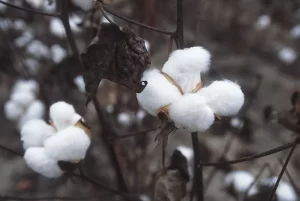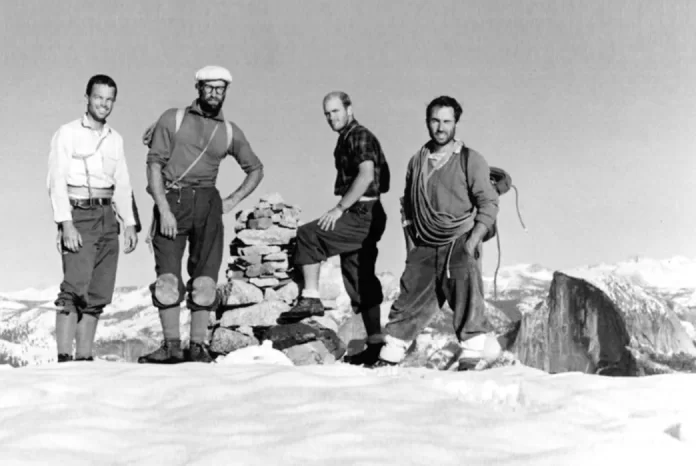“From Cotton’s Downfall to Synthetic Ascendancy: Unraveling the Science of Moisture-Wicking Fabrics in Outdoor Survival“

Hey, textile adventurers! It’s your favorite fabric aficionado, Textile Topher, back with another deep dive into the marvelous world of textiles and tech. Today, we’re tackling a particularly life-saving topic: moisture-wicking properties of various fabrics, and whether the phrase “cotton kills” holds any threads of truth. Trust me, this isn’t just hyperbole. When it comes to the great outdoors, the fabric you choose can indeed make the difference between a safe journey and a risky ordeal.
The Dreaded Cotton Chaos
Let’s start with the ominous phrase “cotton kills.” This idea gained traction within outdoor communities—think hikers, trail runners, and mountaineers—following several tragic incidents. Sadly, people wearing cotton as their primary outdoor gear encountered severe and even fatal consequences under harsh weather conditions. But why does cotton get such a bad rep?
Air Pockets and Insulation
To understand this, let’s delve into the basics. Clothing insulates us by trapping warm air in microscopic pockets within the fabric. Cotton, being a natural fiber with a soft, fluffy texture, is excellent at this in dry conditions. However, things go south the moment cotton gets wet. Whether from sweat, rain, or mist, cotton’s absorbent nature turns it into a sponge, soaking up moisture and filling up all those insulating air pockets with water.
In cold, wet environments, this is disastrous. Wet cotton not only loses its insulating properties but also clings to your skin, allowing your body heat to escape rapidly. The feeling of cold intensifies, setting the stage for hypothermia—a potentially life-threatening condition where your body loses heat faster than it can produce it. And no, you don’t need freezing temperatures for hypothermia; even cool weather can be dangerous when you’re wet and exposed.
Wicking to the Rescue
Enter moisture-wicking fabrics, the superheroes of modern outdoor gear. The concept of wicking revolves around capillary action—the ability of a material to move liquid from one area to another through tiny spaces within the fabric. This is where the term ‘capillary action’ comes into play. Through this process, moisture (like sweat) isn’t allowed to pool against your skin. Instead, it’s moved from the inner layers of the fabric (next to your skin) to the outer layers, where it can evaporate quickly.
Capillary Action Explained
Capillary action occurs due to the molecular forces between the liquid and the fabric’s internal surfaces. Picture this: the fabric’s fibers create narrow channels through which the liquid is pulled, moving moisture from areas of higher concentration to those with lower concentration. The outer layers of the fabric are designed to allow quick evaporation, keeping the inner layer—i.e., the layer in contact with your skin—relatively dry.
Synthetic Fabrics: Hydrophobic Heroes
Most modern moisture-wicking garments are made of synthetic fibers like polypropylene, nylon, and polyester. These materials are termed ‘hydrophobic,’ meaning they resist water penetration. This characteristic alone ensures they dry much faster than cotton, which is renowned for retaining large amounts of water and taking ages to dry.
Polyester & Nylon
Polyester and nylon are more than just quick-drying; their fibers can be engineered to boost moisture-wicking properties. For example, their surface can be textured to increase surface area, facilitating faster movement and evaporation of moisture. Many outdoor enthusiasts love these fabrics also because they are lightweight, durable, and often infused with antimicrobial treatments to combat odors—a key perk when you’re days into a trek without a shower in sight!
Natural Wicking Wonders: Wool
But let’s not think synthetics have a monopoly on moisture management. Wool, particularly Merino wool, has stellar moisture-wicking capabilities, alongside unique properties that make it ideal for outdoor activities.
Merino Magic
Merino wool can absorb up to 30% of its weight in water before feeling wet, yet it wicks moisture away from the skin and dries more efficiently than cotton. Wool fibers contain internal structures called ‘cortexes’ that manage moisture through absorption and expulsion. Wool also possesses natural lanolin, an antimicrobial component that helps minimize odors—an appealing feature when exertion meets extended wear.
Clever Layering Techniques
Layering is commonly accepted as the best strategy to regulate body temperature and manage moisture effectively during outdoor excursions. The layering system generally involves three types of garments: A moisture-wicking base layer, an insulating middle layer, and a protective outer layer.
The Synergistic Effect
1. Base Layer:** This is the foundation. Made from moisture-wicking materials like polyester or Merino wool, it pulls sweat away from your body to keep your skin dry.
2. Middle Layer:** Often a fleece or padded jacket, this layer provides insulation by trapping air, retaining warmth even if you get damp from sweat.
3. Outer Layer:** The shell. This layer repels wind and water, yet allows moisture to escape. Think technical jackets made with materials like Gore-Tex, which are both waterproof and breathable.
When these layers work in synergy, they create an effective barrier against the cold and wet, minimizing the risks associated with moisture and temperature fluctuations.
Walking the Tightrope of Tech and Tradition
In today’s world, technical textiles are constantly evolving. One buzzworthy advancement includes textiles integrated with smart technologies. Some modern moisture-wicking fabrics now come equipped with embedded micro-sensors that monitor sweat rates, hydration levels, and even body temperature. These data-driven garments provide real-time insights and are all set to revolutionize outdoor gear further by customizing fabric performance based on individual needs.
The Role of Smart Textiles
Smart textiles, or e-textiles, are materials that have electronics and interconnections woven into them. Imagine a shirt that can adjust its fiber orientation or heat levels in response to environmental changes. This adaptability is the next big leap from traditional static fabrics. Given the stakes when hiking in challenging conditions, such innovations could offer life-saving benefits.
Ditching Cotton for Modern Gear
While the phrase “cotton kills” might sound like an exaggeration, the science behind it is compelling. When you’re venturing into unpredictable outdoor conditions, opting for moisture-wicking fabrics is not just a matter of comfort; it’s a crucial safety choice. Synthetics and modern wool offer superior moisture management, keeping you warm and dry, thus reducing risks associated with exposure and hypothermia.
In Summary: Fabric Wisely, Live Safely
Armed with an understanding of the critical differences between cotton and wicking fabrics, you’re now better prepared to assemble your outdoor kit. Whether you lean towards high-tech synthetics, the natural comfort of Merino wool, or a combination thereof, the key takeaway is clear: Plan your fabric choices as meticulously as your route. Choose materials that actively work to keep you dry and warm, because with the right knowledge, you can ensure that “cotton kills” is a moot point in your wilderness adventures.
Until next time, stay threaded, stay warm, and keep exploring!
Keywords: Moisture-wicking, Cotton, Hypothermia (Post number: 231), Merino wool, Synthetics





